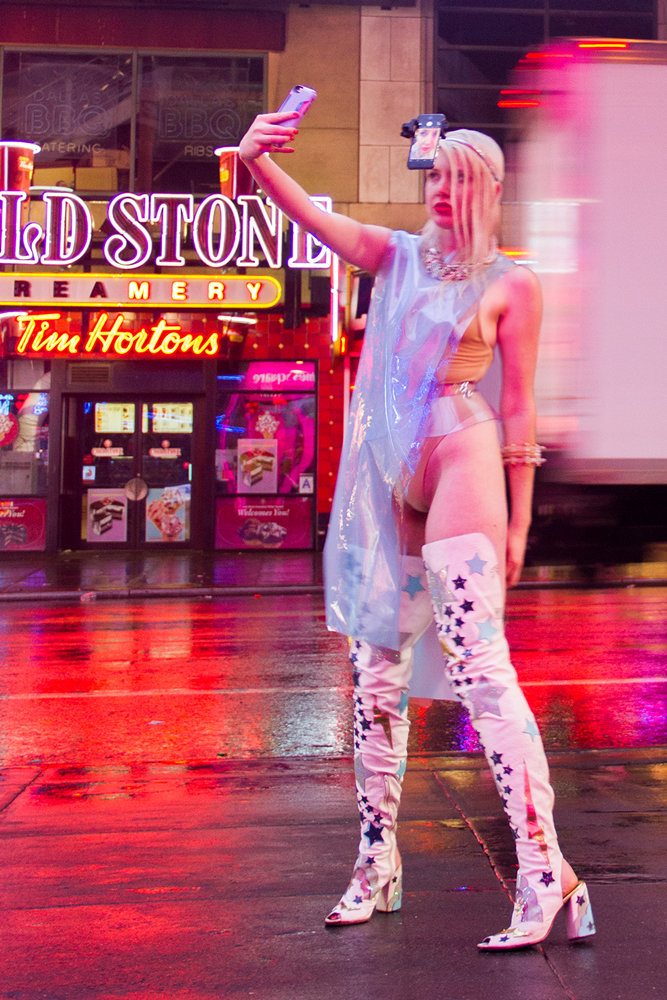Deutsche Welle reviews Virtual Normality – Women Net Artist’s 2.0, the upcoming group show at Museum der bildenden Künste, Leipzig featuring works by Signe Pierce, Molly Soda, and Arvida Byström among others.
Women artists redefining ‘virtual normality’
By Annabelle Steffes-Halmer
An exhibition in Leipzig shows how artists from the Tumblr and Instagram generation use the internet and social media to reflect on the ideals of female beauty. Here’s a preview of some of the works on show.
A very different aesthetic
The 13 artists participating in the “Virtual Normality – Women Net Artists 2.0” exhibition are all “digital natives,” meaning they were born or brought up during the digital age. They find inspiration online, mainly on social media, and are concerned about gender stereotypes and identity. The Japanese photographer Izumi Miyazaki plays with the clichés of selfies in her work.
Provocative role-playing games
Miyazaki’s surreal style is often disturbing, as is the case in this photo, titled “Tomato.” She and her peers explore the possibilities of virtuality by playing with their bodies, creating new characters and slipping into roles. They exploit these constructed alter-egos in order to highlight and ridicule stereotypes.
Unmasking transphobia
In addition to photos, the exhibition displays several videos, such as “American Reflexxx” by Alli Coates and Signe Pierce. The short from 2013 is a social experiment: Pierce, wearing a reflective mask, strolls through the streets of Myrtle Beach, South Carolina and lets pedestrians question her gender or sexualize her. The video ends with a shocking act of violence, revealing rampant transphobia.
Much ado about naughty
Many of the artists at the Leipzig exhibition work with motifs that may cause discomfort among viewers. The Swedish artist Arvida Byström, for instance, often shows her hairy armpit or lets her pubic hair peek out. In her commercial for the German sportswear manufacturer Adidas, she posed with unshaven legs; she received rape threats because of the campaign.
Playing with their bodies
But neither Bystörm nor her New-York based colleague Leah Schrager are intimidated by spiteful comments online. Although they tend to provoke with their works, the main objective for these artists is to be able to do what they want with their bodies, which often results in imagery labeled as “lascivious,” as seen in the Schrager’s piece above.
The other kind of #foodporn
The American artist and photographer Stephanie Sarley also plays with her sexuality, and her sense of humor shows in “Foodporn,” a photo series inspired by the hashtag of the same name — a popular way to mark delicious and good-looking dishes on social media. You can see an example of her take on the phenomenon above…
Hair as a statement
How have Western ideals of beauty influenced women with Afro-textured hair? That is a question Nakeya Brown explores with her art. While there are still many women who straighten their frizzy hair, the American “natural hair movement,” which started in the 2000s, has been encouraging women of African descent to keep the natural texture of their hair.
Against hatred
Even though all the artists of the “Virtual Normality – Women Net Artists 2.0” exhibition have had to battle hateful comments online, they continue to create art with a strong, feminist attitude and have no intention of giving up. After all, their motto goes, “To carry on until there is no hatred anymore.” The exhibition runs from January 11 to April 8, 2018, at the MdbK in Leipzig.


